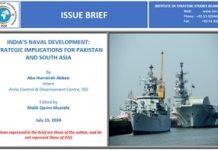On March 25, 2021, North Korea fired two ballistic missiles, which it claimed were new ‘tactical guided’ missiles and could carry a payload of 2.5 tonnes,[1] in the country’s first major display of power since Joe Biden became the US President. A few months earlier, in January, they had unveiled a new Submarine-launched Ballistic Missile (SLBM), among other missiles and conventional forces, during a military parade marking the end of the 8th Congress of the Workers’ Party. They had also displayed a new, larger Intercontinental Ballistic Missile (ICBM) during a similar military parade in October 2020. These displays are a continuation of North Korean nuclear advancements which have increased exponentially since Kim Jong-un took office in 2011. Although the former US President, Donald Trump, showed early promise in 2018 by meeting with Chairman Kim several times, his efforts ultimately bore no fruit. President Joe Biden will now have to face a North Korea that has grown more confident and has a greater nuclear capability than ever before.
Home ISSI Publications Articles Young ISSI Professionals Corner Issue Brief on “Recent North Korean Nuclear Advancements: Challenges and Prospects for...
















